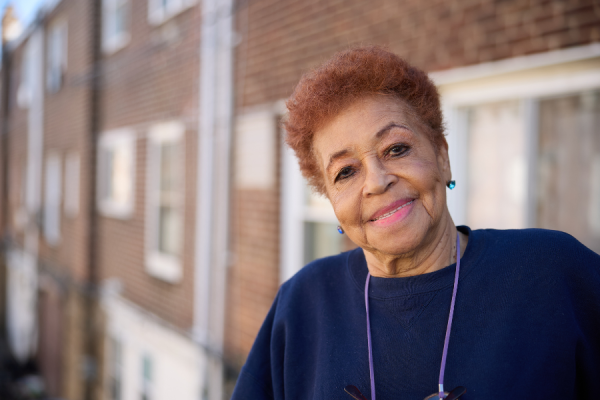For Patricia G., the symptoms of chronic obstructive pulmonary disease (COPD) were sneaky. At first, she felt winded.
“I was a counselor in an after-school program for fifth and seventh graders,” Patricia recalls. “I just noticed that, while going up steps, I would get out of breath.”
COPD is a serious, chronic lung condition with no cure. It restricts the normal amount of air flowing in and out of your lungs. As a result, less oxygen is delivered throughout your body. And for your body to function normally, it’s essential for your tissues to receive sufficient oxygen.
In the early stages of COPD, many people don’t realize they are sick. They may blame their shortness of breath on being older or out of shape. In Patricia’s case, she wasn’t diagnosed until she went to the hospital for another medical issue.
“I had a cold that brought on nausea,” she says. “The Temple staff talked to me about respiratory problems.”
Patricia met a Temple Health specialist, set up an appointment with him, and learned in 2018 that she had emphysema. Emphysema is one of the most common types of COPD.
Building new routines
Patricia was referred to her current pulmonologist, Massa Zantah, MD, in 2023. Dr. Zantah started Patricia on a pulmonary rehabilitation program at the Temple Lung Center at Jeanes Campus.
In pulmonary rehab, Patricia learned more about COPD and how it progresses. She also learned how to use breathing techniques and exercise to feel stronger and keep her shortness of breath under control.
“They put me through stress tests and a walking test with an oximeter to see how my oxygen levels were,” Patricia explains. “I also blew into gadgets to see how much air was or wasn’t in my lungs. That’s how we started.”
After that, she had regular checkups. She also exercised on a treadmill at the pulmonary rehab center regularly.
“They created a routine for me and we built upon it,” she says of the rehab specialists. “I liked the treadmill — just the fact that I was able to use it.”
The staff at Temple made it easy to keep coming back, Patricia says.
“I enjoyed my time there and looked forward to my visits,” she recalls. “And I developed a kinship with the other patients there.”
